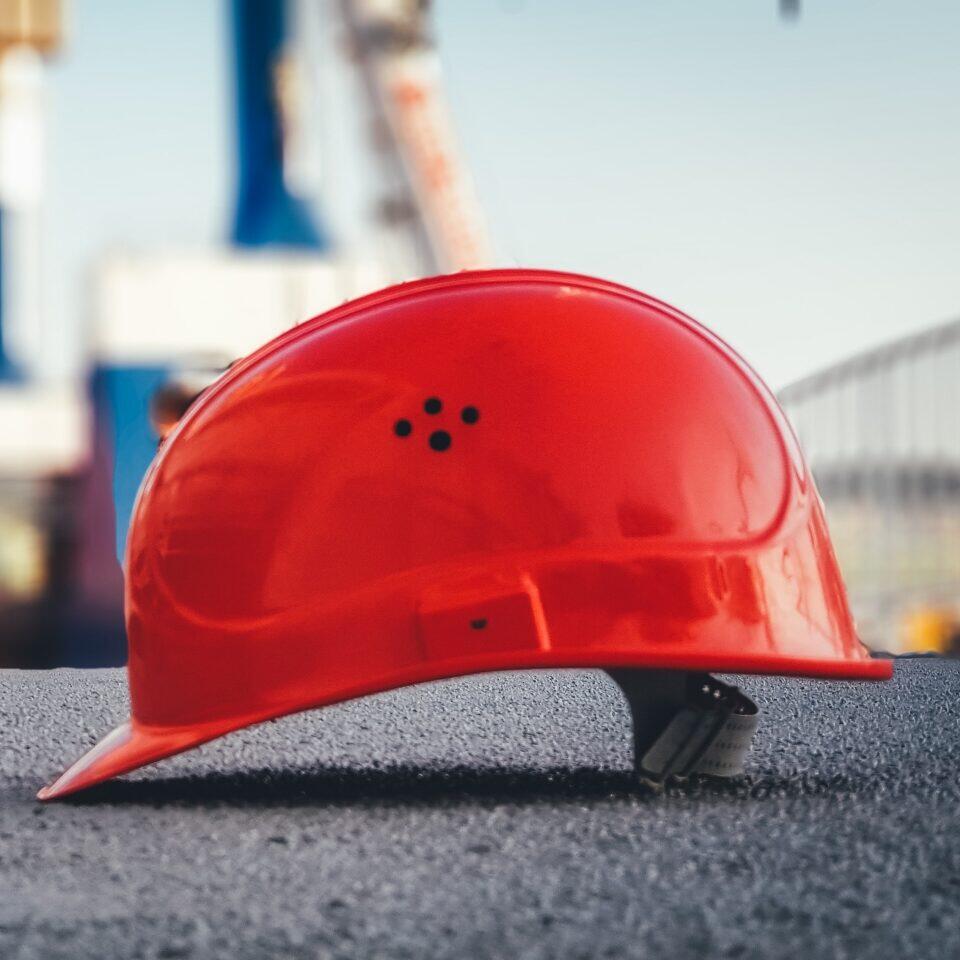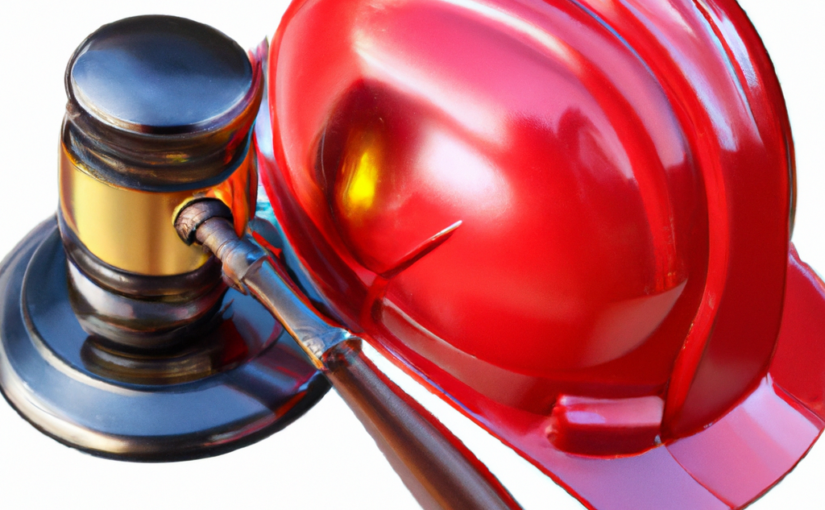Last Updated on February 16, 2023
Injured at work? Need legal help? Call 844–682‑0999 now for Free consult.
Employee Safety, Injures and Workplace
Injury prevention is essential to a safe and productive workplace, and employers must protect their employees from the risks of work-related injuries. With the right safety practices in place, employers can help to minimize the risk of injury, improve employee morale, and reduce insurance and legal costs. This article will discuss essential safety practices and how employers can minimize injury risk now.
Essential Safety Practices
Employers must prioritize safety in the workplace by implementing essential safety practices that can help prevent common workplace injuries. These safety practices include providing proper training and instruction to employees, conducting regular safety assessments, enforcing safety rules and regulations, and using safety equipment. Additionally, employers should create a culture of safety by engaging employees in safety conversations and emphasizing the importance of following safety protocols.
Another important safety practice is to create a reporting system that encourages employees to report any potential safety hazards or risks. By providing employees with a way to report potential safety hazards, employers can identify issues before they become major issues and prevent common workplace injuries.
Finally, employers should ensure that adequate safety resources are available to employees. This includes providing the necessary safety equipment, such as protective gear, and ensuring that any necessary repairs or maintenance on the workplace are done promptly. With the right safety resources in place, employers can create a safe and productive workplace.
What poor safety create conditions for work cause Injury?
- Poorly maintained and/or outdated equipment can lead to accidents, slips and falls and other types of workplace injuries. For example, a malfunctioning piece of machinery can cause a worker to be cut, burned or otherwise injured if the machine is not regularly inspected and serviced.
- Unsafe working conditions created by inadequate lighting, ventilation or access can lead to slips, trips and falls, as well as other types of injuries. For example, if a working environment does not have proper lighting, workers may struggle to see and this can result in a slip or trip.
- Unsafe working practices such as working without protective clothing, equipment or tools can result in cuts, bruises and other types of injuries. For example, a worker without gloves may not be able to grip a tool properly and therefore, may be more likely to slip, leading to an injury.
- Poorly designed workstations can lead to workers straining their back and neck muscles, as well as suffering other types of injury. For example, if a worker is asked to sit in a chair that is not properly adjusted or ergonomically designed, they may be more likely to suffer back or neck injuries.
- Inadequate safety training can lead to workers not understanding how to use machinery or equipment safely, resulting in injury. For example, if a worker is not provided with the correct safety training, they may not know how to properly use a piece of machinery and may be more likely to suffer from a work-related injury.
Federal Agencies That Are Responsible For Worker Safety
- Occupational Safety and Health Administration (OSHA), U.S. Department of Labor, 200 Constitution Ave NW, Washington, DC 20210
- Mining Safety and Health Administration (MSHA), U.S. Department of Labor, 201 12th St S, Room 2150, Arlington, VA 22202
- National Institute for Occupational Safety and Health (NIOSH), Centers for Disease Control and Prevention (CDC), 1600 Clifton Rd NE, Atlanta, GA 30329
- U.S. Chemical Safety and Hazard Investigation Board (CSB), 1750 Pennsylvania Ave NW, Suite 910, Washington, DC 20006
- Office of Workers’ Compensation Programs (OWCP), U.S. Department of Labor, 200 Constitution Ave NW, Washington, DC 20210
- Bureau of Labor Statistics (BLS), U.S. Department of Labor, 2 Massachusetts Ave NE, Washington, DC 20212
- U.S. Department of Transportation (DOT), 1200 New Jersey Ave SE, Washington, DC 20590
- Pipeline and Hazardous Materials Safety Administration (PHMSA), U.S. Department of Transportation, East Building, 1200 New Jersey Ave SE, Washington, DC 20590
- National Highway Traffic Safety Administration (NHTSA), U.S. Department of Transportation, 1200 New Jersey Ave SE, Washington, DC 20590
- U.S. Department of Health and Human Services (HHS), 200 Independence Ave SW, Washington, DC 20201
What State Agencies Responsible For Worker Safety?
Each state has its own government agency that is responsible for worker safety. Here is the list of agencies responsible for each state:
Alabama: Alabama Department of Labor, 649 Monroe St, Montgomery, AL 36131
Alaska: Alaska Department of Labor and Workforce Development, P.O. Box 110013, Juneau, AK 99811–0013
Arizona: Industrial Commission of Arizona, 800 W Washington St, Phoenix, AZ 85007
Arkansas: Arkansas Workers’ Compensation Commission, 324 S Spring St, Little Rock, AR 72201
California: Division of Workers’ Compensation, 1515 Clay St, Oakland, CA 94612
Colorado: Division of Workers’ Compensation, 633 17th St, Suite 400, Denver, CO 80202
Connecticut: Workers’ Compensation Commission, 21 Oak St, Hartford, CT 06106
Delaware: Division of Industrial Affairs, 4425 N Market St, Wilmington, DE 19802
Florida: Division of Workers’ Compensation, 200 E Gaines St, Tallahassee, FL 32399
Georgia: State Board of Workers’ Compensation, 270 Peachtree St NW, Suite 2200, Atlanta, GA 30303
Hawaii: Department of Labor and Industrial Relations, 830 Punchbowl St, Room 442, Honolulu, HI 96813
Idaho: Idaho Industrial Commission, 317 W Main St, Boise, ID 83735
Illinois: Illinois Workers’ Compensation Commission, 100 W Randolph St, Suite 8–200, Chicago, IL 60601
Indiana: Workers’ Compensation Board of Indiana, 302 W Washington St, Room W195, Indianapolis, IN 46204
Iowa: Iowa Division of Workers’ Compensation, 1000 E Grand Ave, Des Moines, IA 50319
Kansas: Kansas Department of Labor, 401 SW Topeka Blvd, Topeka, KS 66603
Kentucky: Kentucky Department of Workers’ Claims, 657 Chamberlin Ave, Frankfort, KY 40601
Louisiana: Office of Workers’ Compensation Administration, 701 N 4th St, Baton Rouge, LA 70802
Maine: Maine Workers’ Compensation Board, 35 State House Station, Augusta, ME 04333
Maryland: Workers’ Compensation Commission, 10 E Baltimore St, Room 230, Baltimore, MD 21202
Massachusetts: Department of Industrial Accidents, 600 Washington St, Boston, MA 02111
Michigan: Michigan Workers’ Compensation Agency, 3024 W Grand Blvd, Suite 2–400, Detroit, MI 48202
Minnesota: Department of Labor and Industry, 443 Lafayette Rd N, St Paul, MN 55155
Mississippi: Mississippi Workers’ Compensation Commission, 401 N West St, Suite 1101, Jackson, MS 39201
Missouri: Missouri Division of Workers’ Compensation, 3315 W Truman Blvd, Room 310, Jefferson City, MO 65109
Montana: Department of Labor and Industry, P.O. Box 8011, Helena, MT 59604
Nebraska: Nebraska Workers’ Compensation Court, P.O. Box 98910, Lincoln, NE 68509
Nevada: Division of Industrial Relations, 400 W King St, Carson City, NV 89703
New Hampshire: Department of Labor, 95 Pleasant St, Concord, NH 03301
New Jersey: Division of Workers’ Compensation, PO Box 381, Trenton, NJ 08625–0381
New Mexico: Workers’ Compensation Administration, 2040 S Pacheco St, Santa Fe, NM 87505
New York: New York State Workers’ Compensation Board, 328 State St, Schenectady, NY 12305
North Carolina: North Carolina Industrial Commission, 4 W Edenton St, Raleigh, NC 27601
North Dakota: North Dakota Workforce Safety and Insurance, 1601 E Century Ave, Suite 1, Bismarck, ND 58503
Ohio: Bureau of Workers’ Compensation, 30 W Spring St, Columbus, OH 43215
Oklahoma: Oklahoma Workers’ Compensation Commission, 1915 N Stiles, Oklahoma City, OK 73105
Oregon: Workers’ Compensation Division, 350 Winter St NE, Suite 100, Salem, OR 97301
Pennsylvania: Workers’ Compensation Office of Adjudication, 1315 Walnut St, Suite 901, Philadelphia, PA 19107
Rhode Island: Department of Labor and Training, 1511 Pontiac Ave, Cranston, RI 02920
South Carolina: South Carolina Workers’ Compensation Commission, P.O. Box 1715, Columbia, SC 29202
South Dakota: South Dakota Department of Labor and Regulation, 118 W Capitol Ave, Pierre, SD 57501
Tennessee: Tennessee Department of Labor and Workforce Development, 220 French Landing Dr, Nashville, TN 37243
Texas: Texas Department of Insurance, Division of Workers’ Compensation, 7551 Metro Center Dr, Austin, TX 78744
Utah: Division of Industrial Accidents, 160 E 300 S, Salt Lake City, UT 84111
Vermont: Department of Labor, 5 Green Mountain Dr, P.O. Box 488, Montpelier, VT 05601
Virginia: Virginia Workers’ Compensation Commission, 13 S 13th St, Richmond, VA 23219
Washington: Department of Labor and Industries, 7273 Linderson Way SW, Tumwater, WA 98501
West Virginia: Workers’ Compensation Division, Building 3, Room 400, State Capitol Complex, Charleston, WV 25305
Wisconsin: Department of Workforce Development, P.O. Box 7946, Madison, WI 53707
Wyoming: Wyoming Department of Workforce Services, 1510 E Pershing Blvd, Cheyenne, WY 82002
Minimize Injury Risk Now
To minimize injury risk in the workplace, employers should start by assessing their current safety practices. This includes evaluating any safety protocols or rules that are in place, as well as the safety resources available to employees. After assessment, employers should focus on making any necessary changes or improvements to their existing safety practices.
Another important step employers can take is to develop an emergency response plan. This plan should include procedures for responding to emergency situations and emergency contact information. By developing an emergency response plan, employers can be prepared to respond quickly in the event of an injury.
Finally, employers should review their insurance coverage and ensure that they have the right coverage to protect them in the event of a work-related injury. By reviewing their insurance coverage and making sure that they have adequate coverage, employers can protect themselves from potential liability.
As employers strive to create safe and productive workplaces, they must prioritize injury prevention by implementing essential safety practices. By assessing their current safety practices, developing an emergency response plan, and reviewing their insurance coverage, employers can minimize the risk of work-related injuries and protect both their employees and their businesses.
Workers Comp Resources
Need Legal Help ?
844–682‑0999
#BackToWorkAfterInjury #ClaimsDenied #ConstructionWorkersCompensation #DeathBenefits #Employers #FloridaWorkersCompBenefits #IndependentContractors #InjuredAtWork #LawsIn50States #Lawyer #MedicalBenefits #OregonWorkersCompBenefits #OSHA #RehireAfterInjury #USDepartmentOfLabor #WorkersCompBenefits #WorkersCompClaims #WorkersCompensationLaws #WorkersCompRights #WorkInjuryTerms

